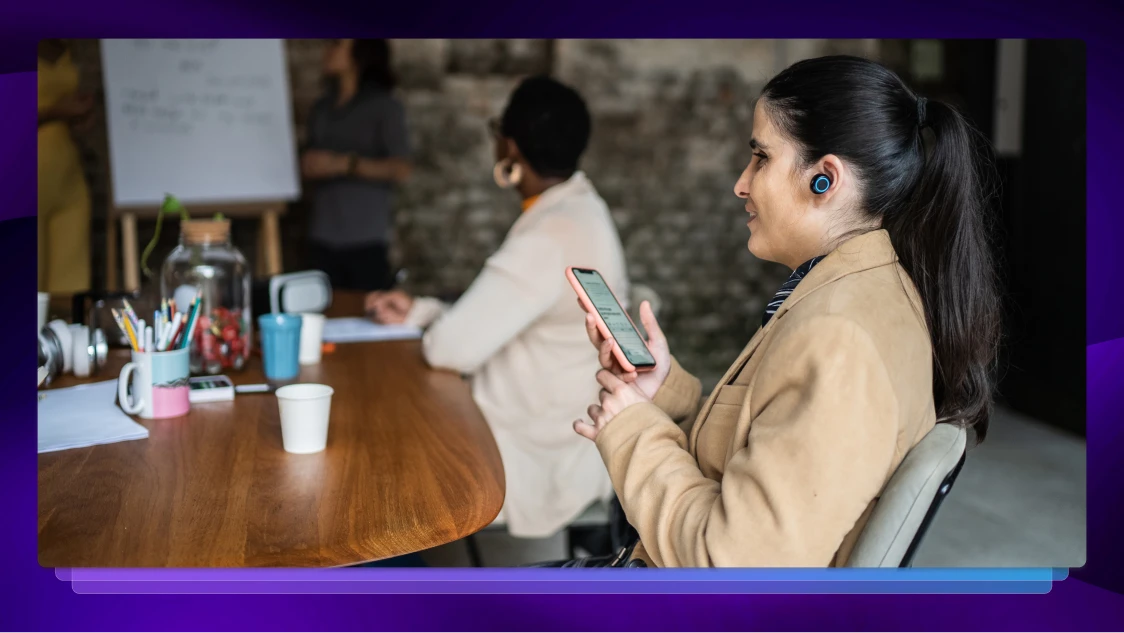How Closed Captions Benefit More Than the Deaf and Hard of Hearing
Closed captions benefit a wide range of people and help them enjoy media and education at similar levels as the general public.

How can closed captions benefit a wide audience? In 1972, Julia Child’s legendary cooking show, “The French Chef,” was the first show ever to air with captions. Since then, this technology has made content more accessible to deaf and hard-of-hearing viewers worldwide. While closed captions benefits for these individuals are commonly understood, the positive impact on people with cognitive or behavioral disorders isn’t discussed as frequently.
DISCOVER HOW ACCESSIBILITY BENEFITS ALL STUDENTS
What Disorders Benefit from Closed Captions?
1. Autism
It’s estimated that 3.5 million Americans are on the autism spectrum. It’s the fastest-growing developmental disability, increasing by 119% between 2000 and 2010. People on the autism spectrum often have challenges understanding human emotions and engaging with others. This especially manifests when these individuals must follow complex conversations, or decode speech when there’s a lot of background noise. For this reason, some autistic individuals may have a difficult time watching videos or television with the sound on. Many autistic individuals claim that muting the content and turning on closed captions have empowered them to truly enjoy videos and television for the first time.
2. Auditory Neuropathy
Auditory Neuropathy Spectrum Disorder, or ANSD, is a problem that can occur at any age, but is most frequently diagnosed in newborns. It’s not known what exactly causes this disorder, but experts believe it is due to a problem with the auditory nerve that facilitates the transmission of sound from the inner ear to the brain. We now know this disorder accounts for 10-15% of hearing loss in newborns.
Treatments for ANSD include speech therapy and the use of hearing aids and other devices. However, many adults who suffer from this disorder in childhood may still have problems discerning speech from background noise, even if their hearing is otherwise adequate. For this reason, they may prefer or rely on closed captions for watching videos.
3. ADHD
You’ve undoubtedly heard of Attention Deficit Hyperactivity Disorder (ADHD), but did you know there are three types? Inattentive ADHD means a person shows enough symptoms of inattention (or easy distractibility) to warrant a diagnosis but isn’t hyperactive or impulsive. It’s also possible for someone with ADHD to be hyperactive and impulsive but not inattentive. Combined ADHD is when a person has symptoms of inattention, hyperactivity, and impulsivity.
Individuals with all these manifestations often see a closed captions benefit, especially in television or movies that require a longer focus on a narrative or lesson. However, there are some challenges. Studies have shown that ADHD viewers may find dividing their focus between the video and captions difficult. The study did show that they end up retaining more information though.
4. Dyslexia
One out of every eight people suffers from dyslexia. Since it’s a disorder specifically related to reading and interpreting letters, it may seem counterintuitive to think that closed captions would help those with dyslexia. However, studies have shown that for students, note-taking during a video or movie is made easier when closed captions are present because it helps them be more confident that they’re spelling and word order is correct. In fact, closed captioned videos may be a better tool for dyslexic students than textbooks since they can hear and see the information simultaneously.
5. Down Syndrome
Down syndrome is the most common genetic disorder in America. This condition is a result of a child being born with an extra copy of their 21st chromosome. Some people with Down syndrome have extra chromosomes in every one of their cells, while others may not. In all cases, the presence of the extra chromosome leads to common challenges in cognitive development and learning spoken language.
Studies have shown that children with Down syndrome have poor auditory short-term memory, meaning they don’t always remember what they just heard. However, they are often excellent readers. Learning language, especially fine points like grammar, prefixes, and suffixes, can be made a lot easier for them. These children readily experience closed caption benefits while they are watching television and videos.
The positive benefits of closed captions are plentiful. They help the deaf and hard of hearing, those with cognitive and learning behaviors, people that speak English as a second language, and have even been found to improve literacy rates. They also benefit people that just happen to be watching content on mute.
What benefits have you seen from closed captioning your videos?
DOWNLOAD THE ULTIMATE GUIDE TO ACCESSIBILITY IN HIGHER EDUCATION















